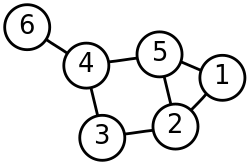Calculus is a branch of mathematics that deals with the study of rates of change and accumulation of small quantities. It is an essential tool for understanding many scientific and engineering phenomena, from the motion of planets to the design of bridges and buildings. In this blog post, we will discuss the history of calculus, its fundamental concepts and formulas, and how it has influenced various fields of science and our daily lives.
History of Calculus
Fundamental Concepts and Formulas
- Derivative Formula:
The derivative of a function `f\left(x\right)` is defined as the rate of change of `f\left(x\right)` with respect to `x`. It is denoted by `f^'\left(x\right)` or `\frac{dy}{dx}`. The derivative formula is given by:
`f^'\left(x\right)=\lim_{h\rightarrow0}\frac{f\left(x+h\right)-f\left(x\right)}h`
This formula tells us how the function changes as we move from one point to another. The derivative is used to calculate the instantaneous rate of change of a function at a particular point. For example, if `f\left(x\right)` represents the position of an object at time `t`, then `f^'\left(x\right)` represents its velocity at time `t`.
- Integral Formula:
The integral of a function f(x) over a given interval [a,b] is denoted by `\int_a^bf\left(x\right)\dx`. It represents the accumulated change of f(x) over the interval [a,b]. The integral formula is given by:
`\int_a^bf\left(x\right)\dx=\lim_{n\rightarrow\infty}\sum_{i=1}^nf\left(x_i\right)\triangle x`
where `\triangle x=\frac{b-a}n`, and `x_i` is a point in the ith subinterval `\left[x_{i-1},x_i\right]`.
This formula tells us how much the function changes over an interval. The integral is used to calculate the area under a curve, the volume of a solid, and many other quantities that involve accumulation of small quantities.
- Fundamental Theorem of Calculus:
The fundamental theorem of calculus connects differential calculus and integral calculus. It states that if f(x) is a continuous function on the interval [a,b], then the integral of f(x) over [a,b] can be calculated using the antiderivative of f(x) evaluated at the endpoints of the interval:
`\int_a^bf\left(x\right)\dx=F\left(b\right)-F\left(a\right)`
where `F\left(x\right)` is the antiderivative of `f\left(x\right)`.
This theorem is a powerful tool for evaluating integrals and for solving optimization problems.
Applications of Calculus
Physics: Calculus is used to study the motion of objects, the behavior of fluids, and the structure of matter. It is essential for understanding many phenomena in physics, from the motion of planets to the behavior of subatomic particles.
Engineering: Calculus is used to design buildings, bridges, and other structures. It is essential for understanding the forces and stresses that act on structures and for optimizing their designs.
Economics: Calculus is used to study optimization problems in economics, such as maximizing profits or minimizing costs. It is also used to model the behavior of markets and the interactions of buyers and sellers.
Medicine: Calculus is used to model the spread of diseases, the growth of populations, and the behavior of biological systems. It is essential for understanding many phenomena in medicine and for developing new treatments and therapies.








